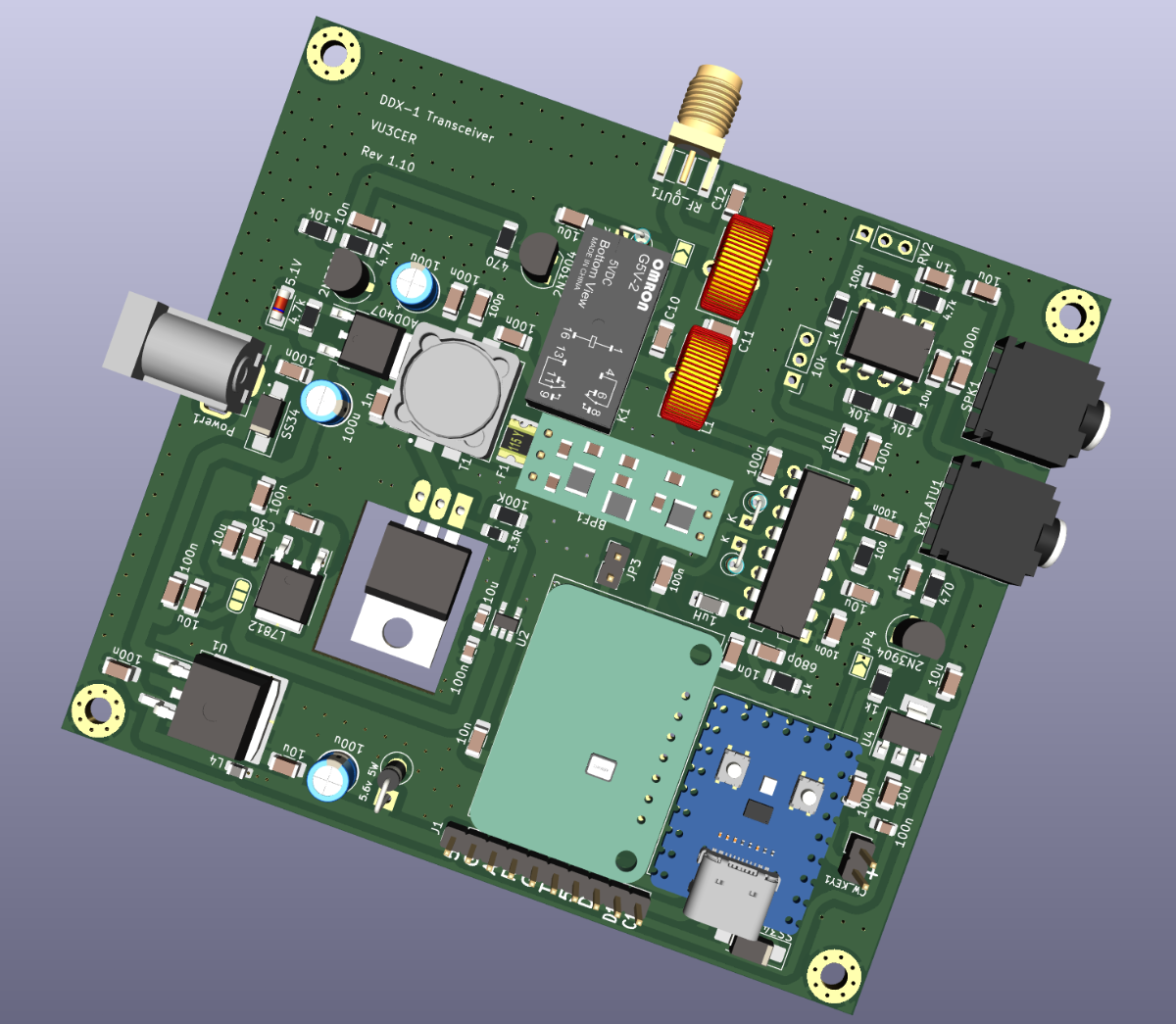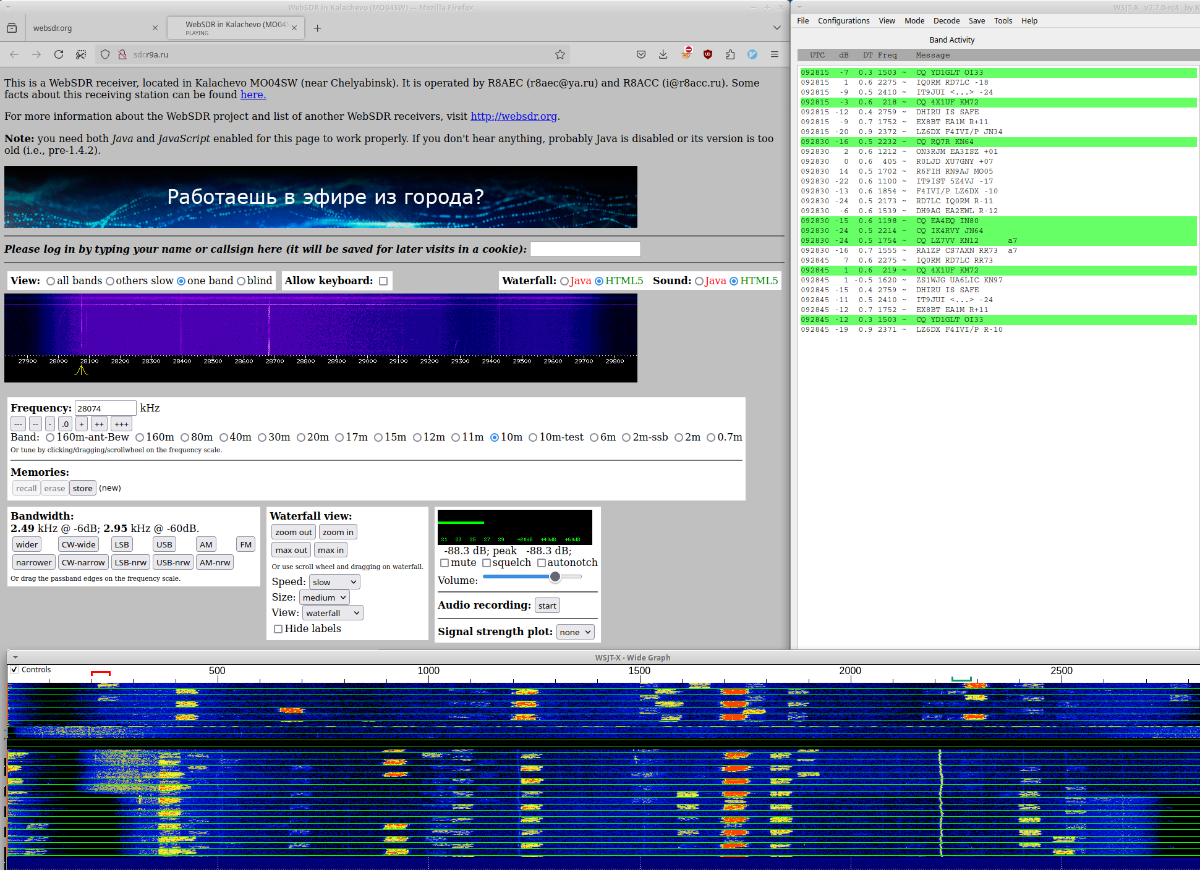Re-imagining Radio for the Digital Age
In today's hyper-connected world, this DIY project breathes new life into radio technology. The 'Global Communications Transceiver' combines the accessibility of traditional radio with cutting-edge digital capabilities, offering a unique solution for both hobbyists and emergency communicators.
This compact DIY device, operating in the 3 to 30 MHz range, challenges the notion that radio is obsolete. By leveraging digital protocols like FT8, it achieves remarkable long-distance communication at a fraction of the cost of commercial equipment. The project not only demonstrates radio's enduring relevance but also opens up new possibilities for global connectivity without relying on conventional infrastructure.
For tech enthusiasts, this transceiver offers a hands-on opportunity to explore radio engineering, from PCB assembly to firmware customization. Meanwhile, its potential for reliable communication during crises underscores radio's critical role in emergency preparedness. As we continue to push the boundaries of digital technology, this project serves as a reminder that sometimes, looking to the past can inspire innovations for the future.
The following 3D render shows how the finished transceiver project looks like.

If you are new to soldering SMD components please see https://www.digikey.com/en/maker/tutorials/2023/how-to-solder-surface-mount-components-using-common-tools. Note: You can also order mostly-assembled PCB boards with all the SMD components pre-soldered using our published PCBA files.
Prerequisites
- Basic soldering skills (SMD soldering experience recommended)
- Access to electronic components and PCB ordering services
- Understanding of amateur radio regulations in your area
Components and Resources
- PCB ordering: DigiKey, JLCPCB, or Robu (India)
- Component sourcing: DigiKey, Mouser, TME, LCSC
- Interactive BOM: https://github.com/kholia/Global-Communications-Transceiver/blob/master/bom/ibom.html
We recommend downloading and viewing the https://github.com/kholia/Global-Communications-Transceiver/blob/master/bom/ibom.html file locally. This allows us to view the BOM and the component placement information in an interactive manner.
.png)
Assembly steps
We recommend assembling the smallest SMD parts first.
- Solder UCC27511DBVR gate driver (U2, SO23-5 package)
- Solder 1206 and 0805 passives, SMD diodes, PPTC fuse
- Solder voltage regulators and AOD407 MOSFET
- Solder T1 SMD transformer
- Perform initial smoke test with CC CV power supply
- Assemble THT components (IRF510 MOSFET last)
- Perform final smoke test
- Upload FOSS transceiver firmware to RP2040-Zero MCU
- Connect power supply and HF antenna
- Connect RP204-Zero MCU to laptop/phone for receiving digital traffic (no license required in most countries)
Features
The 'Global Communications Transceiver' represents a decent advancement in homebrew radio technology. It introduces several notable features that set it apart from previous designs:
- Connectivity:
- Single USB-C cable for Audio and CAT control
- Power Output:
- 5W on all HF bands
- 1-2W on 50 MHz (!)
- Reliability:
- Robust PA handling various conditions (open, short, 1:10 SWR)
- Stable VFO which is resistant to drift
- Dependable T/R switching with DPDT relay
- Signal Quality:
- Bit-perfect, deterministic TX output, avoids issues related to 'audio frequency counting' approach used by other designs
- Design Simplicity:
- No toroids to wind (with external LPF bank in use)!
- Thermal Management:
- Cool-running IRF510 final (Class-D operation)
- Minimal heat sink requirements
- Cost-Effectiveness:
- Estimated BOM cost of 15 to 30 USD
- Performance:
- Stress-tested by WSJT-Z for multiple days
- Other improvements:
- Switchable BPF for interference reduction (protection from front-end overload)
- Ready for immediate use - no calibration required thanks to our 0.5ppm TCXO usage
Sending custom ('personal safety' related) messages
The best part about digital communication protocols is that the other remote party (the receiver, which could be your family or friends) does NOT necessarily need to have a physical radio device. They can simply connect to any of the global geographically distributed WebSDRs (software defined radios) and receive the 'personal safety' related messages transmitted by you.
On the transmitting side (located in Pune, MK68 grid):

On the receiver side via a WebSDR located in Assam, NL66 grid (across India):

Another WebSDR in Russia also successfully received our message:

We have successfully communicated a custom personal safety update (which is 'DHIRU IS SAFE') across a few thousand kilometers over the existing FT8 protocol!
What to Expect
- Potential for long-distance communication (10,000+ km) using digital protocols like FT8
- Note: Performance depends on propagation conditions
Using free WSJT-X software and our custom transceiver, we established an FT8 contact spanning 15,500+ kilometers (fifteen thousand plus) between Pune, India and Medellín, Colombia. This setup achieves long-distance communication at just 1/70th the cost of commercial transceivers like the Icom IC-7300, while also significantly reducing size, weight, and power consumption.

While not being a SSB (single-sideband) receiver, the Global-Communications-Transceiver performs pretty fine and routinely receives FT8 traffic from 80 to 100+ counties. The transceiver's capabilities extend far beyond FT8 support. At its core, it functions as a versatile FSK (Frequency Shift Keying) modem, opening the door to a vast array of potential digital communication protocols. This flexibility invites innovation, allowing developers and enthusiasts to create and implement new protocols limited only by their imagination.

Additional Information
- KiCad design files and more info: https://github.com/kholia/Global-Communications-Transceiver
- For receiving only, a long piece of electrical wire (5m+) can be used as an antenna
- Transmitting on amateur radio bands typically requires a license. Always follow local regulations and obtain necessary licenses before transmitting.
Full Picture

Here is how the transceiver looks after mounting it on an overly overkill large heat sink.

Files
The KiCad design files, firmware's source-code and additional information are available @ https://github.com/kholia/Global-Communications-Transceiver.
Demo Video
